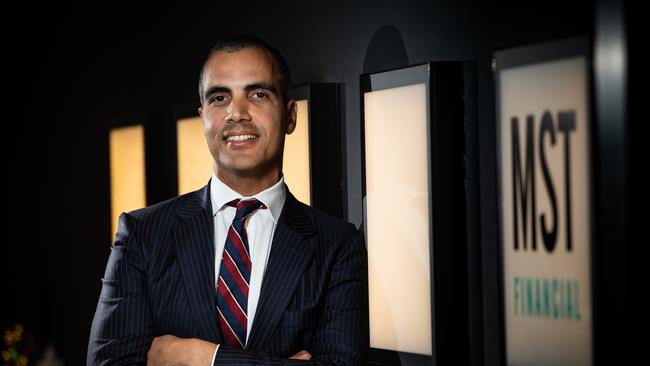Analysts warm to what has repeatedly been described as an ‘expensive’ market
Analysts believe our sharemarket’s high valuation may be warranted based on the improved quality of corporate earnings.

At the risk of sounding too bullish about record highs, analysts say the Australian sharemarket’s rich valuation may be warranted by the improved quality of corporate earnings relative to the past.
Aside from the early stages of the Covid-19 pandemic when share prices recovered faster than earnings estimates amid unprecedented fiscal and monetary stimulus, a significant part of the Australian sharemarket has never been as expensive as it is now, according to UBS.
Excluding the volatile resources sector, the 12-month forward price-to-earnings multiple of the ASX 200 ex-resources index sits at 18.5 times after a 14 per cent rise in the overall market since October.
Its 40 per cent above a long-run average of 13.5 times, 12 per cent above a May 2007 pre-GFC peak, and 5 per cent higher than where it peaked in April 1999 during the height of the dotcom bubble.
The wider S&P/ASX 200 index trades on 16.3 times versus a long-term average of about 14.5 times.
Its 12-month forward dividend yield is about 3.9 per cent versus an average of about 4.6 per cent.
The ASX 200 also trades on a record 20 per cent valuation premium to global stocks, well above a 20-year average of 5 per cent.
The S&P/ASX 200 industrials ex-financials index trades on an historically elevated forward PE of 22.8 times versus a long-term average in the teens.
Bank shares were crushed by rating downgrades by Macquarie Equities on Thursday.
Westpac and ANZ both dived 3.8 per cent, NAB fell 2.8 per cent and CBA lost 1.1 per cent.
Macquarie’s Victor German cut ANZ, NAB and Westpac to underperform, matching his CBA rating.
“Banks are trading at peak multiples without a clear fundamental reason,” Mr German said.
While interest rate cuts were expected, he said the economic and stock-specific settings that underpinned banks’ outperformance during previous rate cut cycles aren’t evident. “We see limited scope for banks to surprise in the medium term and hence see limited fundamental reasons for a structural rerating,” he added.
The fall in banks was largely offset by gains in resources companies, with BHP up 2.7 per cent after Citi upgraded it to buy. BHP “now looks cheap enough”, said Citi analyst Paul McTaggart.
But Australian companies are also better at managing cycles and delivering earnings than they were in the past, according to UBS Australia equity strategist Richard Schellbach.
“Equity earnings have proved to be more secure, and of higher quality, than we had previously assumed,” he said.
“This is not luck, but a product of learned experience.”
“Banks are now showing far more discipline in extending credit, manufacturers and retailers are far better at managing their inventories, and miners are showing discipline to avoid oversupply.
“The average industrial company is also much more cash generative than it was previously.
“Part of this is because good companies got bigger and the bad, very capital-intensive companies – a lot of those have just left the index, been taken out or are not very big anymore,” said MST senior analyst Hasan Tevfik.
“If a company is more cash-generative than it was historically, investors should be willing to pay a higher PE ratio for that company.”
But this is very much an industrials story. Banks and resources companies are still capital-intensive.
UBS’s Mr Schellbach said today’s higher quality earnings also supported lower equity risk premiums and higher PE ratios in the Australian sharemarket.
“The fall we have seen in equity risk premiums is being cited as illustrating the lack of value in stocks, but we believe a structural force is being overlooked, which is that maybe investors no longer deserve, or require, the same level of compensation to take on equity risk,” he said.
“The reason for this is that equity earnings have shown themselves to be more dependable than we assumed.”
While low equity risk premiums have recently been cited as illustrating a lack of value in stocks, Mr Schellbach thinks a structural force is being overlooked.
The S&P/ASX 200 index hit an all-time record high of 7853 points last week.
For the first time since early 2020 it exceeded Bloomberg’s aggregated 12-month target price, at 7826.
“Maybe investors no longer deserve, or require, the same level of compensation to take on equity risk,” Mr Schellbach said.
“The reason for this is that equity earnings have shown themselves to be more dependable than we assumed.”
But at the same time he doubts we’re in for a multi year bull market like the late 1990s.
“The starting point of valuations are just so different,” Schellbach said.
“Bank PEs were under eight times in early 1995 versus 16 times now.
“The reality is that the current rate hiking cycle never saw equities derate anywhere near to the extent which they did in 1994.”



